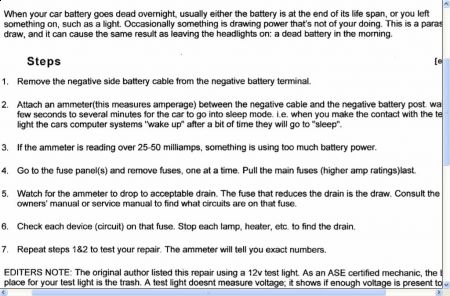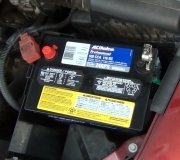There's a problem with the current drain test you're doing. Most cars since the mid '90s have multiple computers that have to time out and go to "sleep" mode after the ignition switch is turned off. That can take up to 20 minutes. During that time there can be up to three amps of current flow.
The next problem is you won't get nearly enough accuracy on the 10-amp scale on your meter. You need the 200 milliamps scale. If you start out on that scale, the normal current for the computers that are still running will blow the meter's internal fuse which is typically a half-amp fuse. That means you have to start out on the 10-amp scale, then move the meter's positive lead to the other jack at least 20 minutes later. Doing that creates an open circuit for a few seconds, and guess what. That wakes up the computers for another 20 minutes and they draw high current again.
Even if you have a meter that doesn't use a separate 10-amp current jack, simply changing to a lower and more accurate scale does the same thing. All digital meters use a "break-before-make" switch which means it breaks the connection to one scale, then, as it is turned a little further, it makes the connection to the next scale. That way no two different scales are ever selected at the same time, but it also means you have a momentary open circuit when changing scales, and that again wakes up some computers.
The solution is to use a pair of small jumper wires to connect the meter leads, one to the battery's negative post, and one to the car's negative cable, (or the body), have the meter on the 10-amp scale, then use a third clip lead to connect the battery post to the cable whenever you want to switch scales. The third clip lead will bypass the momentary open circuit and prevent the computers from waking up.
Once the computers have timed out, unless specified differently by the manufacturer, the industry standard is to allow no more than 35 milliamps, (.035 amps), of "ignition-off-draw" current. At that rate, Chrysler says a good, fully-charged battery will be able to crank an engine fast enough to start after sitting for three weeks.
14.4 charging volts is perfect. It needs to be between 13.75 and 14.75 volts. That's right at the battery posts. You said that's what you found while driving, so if you were simply looking at the dash gauge, those are never very accurate. Dash gauges are only good for you to recognize when something is not normal. You need measure at the battery with the engine running.
That is only the first part of testing the charging system. You need a professional load tester to test for maximum output current and "ripple" voltage. If the generator has one bad diode of the six, the ripple voltage will be very high, and the most current you'll be able to get under full load is exactly one third of the generator's rated maximum current. With a bad diode, the output voltage can still be okay.
My concern is what sizzled and smelled. That is typical of a burning fuse link wire but most cars no longer use those. They are standard plug-in fuses instead, and bolted-in fuses for the generator's output circuit. There has to be something that isn't working unless a diode failed inside a computer module. Most computers have diodes placed backward between the 12 volt feed terminal(s) and ground. They don't do anything unless the battery is connected backward, then they become a dead short to force that circuit's fuse to blow, thereby protecting the computer. Sometimes those diodes just short, and you would expect the fuse to blow, but sometimes the short develops slowly enough that the copper traces on the circuit board burn open. At that point you might have the stink and the smell, but you won't have the reverse-polarity protection. The computer could still work properly.
You're going to have to elaborate on the 7,000 ohms of resistance you found. That value doesn't belong anywhere in battery cables or the car's wiring.
Sunday, July 5th, 2015 AT 10:02 PM






